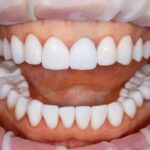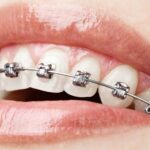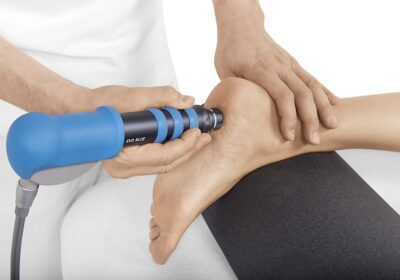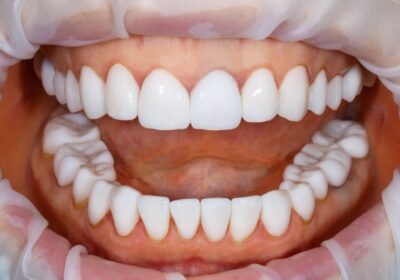
What to Expect During a Consultation with an Oculofacial Surgeon
Considering a consultation with an oculofacial surgeon can feel overwhelming, especially if you’re unsure what to expect. These specialists focus on delicate procedures around the eyes, eyelids, and facial structures, blending medical expertise with aesthetic precision. Understanding the process can help ease any concerns and prepare you for the journey ahead.
During the consultation, the surgeon evaluates your unique needs, discusses potential treatments, and answers any questions. Whether it’s a medical issue or a cosmetic goal, this initial meeting is a vital step in creating a personalized plan tailored to your health and appearance.
Preparing for Your First Oculofacial Consultation
Patients benefit from being prepared for their first consultation with an oculofacial surgeon, as it helps ensure a productive session. Gathering relevant medical records and detailing any past surgeries, injuries, or treatments around the eyes and face is essential. This medical history provides the surgeon with a comprehensive understanding of the patient’s condition.
Creating a list of symptoms, concerns, and goals for the consultation can streamline communication. For example, patients seeking eyelid reconstruction or addressing under-eye hollows gain clarity when they articulate their expectations and priorities.
Avoiding contact lenses and heavy facial makeup on the appointment day minimizes obstructions during the physical examination. This allows the surgeon to carefully evaluate the skin, muscles, and underlying structures of the face.
For individuals interested in exploring cosmetic procedures, researching the surgeon’s areas of expertise in advance is crucial. Consulting with an experienced professional like Oculofacial Surgeon Dr. Amjad Z. Ahmad, M.D. helps address both aesthetic and functional concerns.
Key Assessments During the Appointment: What to Expect
During a consultation with an oculofacial surgeon, several assessments help evaluate the patient’s condition and tailor the appropriate treatment plan. Each evaluation focuses on both functional and aesthetic aspects.
- Medical History Evaluation
The surgeon asks detailed questions about past ocular or facial surgeries, trauma, and medical conditions such as thyroid issues or dry eye syndrome. This review ensures a comprehensive understanding of health factors influencing the treatment approach. - Visual and Functional Assessment
A functional analysis of the eyes, including eyelid position and muscle movement, is conducted to identify potential issues like drooping eyelids or impaired eye closure. Testing visual fields may also be necessary if the condition impacts sight. - Anatomical Examination
A thorough inspection of facial features, skin quality, and tissue laxity is performed to evaluate symmetry and suitability for aesthetic adjustments. Specialized equipment may be used to measure areas requiring correction. - Discussion of Goals and Expectations
Patients share their aesthetic desires and functional goals with the surgeon. This collaborative discussion ensures clarity in planning corrective or cosmetic treatments. Individuals considering procedures like eyelid surgery or brow lifts benefit from this personalized approach. - Photographic Documentation
Photos of the face and eyes are often taken to monitor progress and plan surgical details. These images provide a visual reference to accurately assess outcomes post-treatment.
Oculofacial surgeons like Dr. Amjad Z. Ahmad M.D. prioritize detailed assessments to address both medical necessities and cosmetic preferences. Combining technical expertise with patient input optimizes results.
Personalized Care Planning: Matching Procedures to Needs
An oculofacial surgeon customizes the treatment approach by aligning procedures with the patient’s medical and aesthetic goals. During the consultation, the surgeon evaluates the patient’s specific concerns, such as drooping eyelids, tear duct issues, or facial asymmetry. They analyze the medical history, physical exam findings, and aesthetic preferences to design individualized care plans.
For patients seeking reconstructive procedures, the surgeon prioritizes functional outcomes, such as restoring vision or correcting structural abnormalities. Examples include eyelid surgery for ptosis treatment or addressing orbital fractures. Cosmetic procedure planning focuses on enhancing appearance while preserving natural expressions, such as blepharoplasty or nonsurgical options like dermal fillers.
Collaborative care is emphasized. Patients actively discuss their expectations and receive detailed explanations of potential treatments, their timelines, and associated outcomes. Oculofacial surgeons, including experts like Dr. Amjad Z. Ahmad M.D., integrate advanced techniques to ensure optimal results tailored to each individual’s unique features and needs.
Discussing Potential Risks and Expected Outcomes
Oculofacial surgeons ensure that patients understand the potential risks and outcomes of any proposed treatment. They detail possible complications, which may include swelling, bruising, infection, or scarring, depending on the procedure. For example, eyelid surgeries could involve temporary dry eyes, while more complex reconstructive procedures might carry risks of asymmetry or restricted movement.
Expected outcomes are explained based on an individual’s specific concerns and treatment goals. The surgeon outlines realistic recovery timelines and anticipated results for both functional and aesthetic improvements. Patients undergoing cosmetic procedures, such as eyelid lifts, are informed about enhancements like rejuvenated appearance, while reconstructive patients, such as those with facial trauma, learn about restored function and symmetry.
Clear communication is emphasized, with the surgeon encouraging questions to address concerns. Visual aids or past case examples may be shared to provide clarity. Oculofacial Surgeon Dr. Amjad Z. Ahmad M.D., for instance, combines his expertise with transparency, helping patients make informed decisions about their care during Consultation with an Oculofacial Surgeon.
Understanding Cost and Insurance Coverage for Procedures
Oculofacial surgeons provide a detailed explanation of procedure costs during consultations. They outline specific pricing for planned treatments, including surgical, non-surgical, and follow-up care expenses. Patients receive an itemized breakdown to understand what each component entails.
Insurance coverage varies by procedure type and medical necessity. Functional procedures, like eyelid surgery for vision improvement, are commonly covered by insurance when supported by appropriate documentation. Cosmetic procedures, however, are typically not covered, as they are considered elective.
Patients are encouraged to contact their insurance provider to verify coverage for treatments suggested by the oculofacial surgeon. Clinics often assist by submitting relevant claims or preauthorization documents to streamline the approval process.
Payment plans or financing options may be available for uncovered services. Practices like those led by Oculofacial Surgeon Dr. Amjad Z. Ahmad M.D. often offer flexible options to ensure affordability, combining expertise with accessible care.
Next Steps After Your Consultation: Scheduling and Preparation
After meeting with an oculofacial surgeon, patients are better equipped to make informed decisions about their care. The next steps typically involve scheduling the recommended procedure, reviewing pre-operative instructions, and preparing for recovery. Clear communication with the surgeon’s team ensures a smooth process, from finalizing timelines to understanding follow-up care requirements.
Patients should feel confident about their personalized treatment plan, knowing it’s designed to address both functional and aesthetic goals. By collaborating with experienced professionals like Dr. Amjad Z. Ahmad M.D., individuals can look forward to achieving optimal results that enhance their quality of life and appearance.


















